During a recent visit to Rosyth, I had the opportunity to sit down with David Lockwood, the CEO of Babcock, to discuss the progress of the Type 31 frigate programme, the future of British shipbuilding, and the role of Rosyth’s shipyard in delivering advanced naval capabilities.
The conversation highlighted Babcock’s achievements in creating a “frigate factory” and the strategic significance of domestic shipbuilding in meeting the Royal Navy’s needs.
David Lockwood, CEO of @Babcockplc, lauded Rosyth’s world-class capabilities in a recent chat with @geoallison, highlighting progress on the Type 31. He noted the ability to deliver five warships in a decade and described the workforce’s mood as expectant about the future. pic.twitter.com/wfsaVTxTQs
— UK Defence Journal (@UKDefJournal) October 10, 2024
HMS Formidable: A Milestone in British Shipbuilding
The steel-cutting ceremony for HMS Formidable marked a significant moment for Babcock, signalling that the Type 31 programme is nearing its midpoint. Lockwood explained the progress so far, stating:
“The steel cut for Formidable really is almost the midpoint of the programme. Two in completion behind us, one just started, two more to go. That will be five warships in 10 years—from contract placement to in-service—never been achieved before by any western shipyard.”
This achievement is particularly notable for its speed and efficiency, demonstrating the success of Babcock’s “frigate factory” model.
Producing five warships in a decade is an unprecedented feat for a Western shipyard, Lockwood said.
A Factory for Frigates
Babcock’s vision for Rosyth has always been ambitious, aiming to establish a production line for frigates that can deliver high-quality warships at speed. As Lockwood highlighted, the progress made thus far is a clear indication that they are on track:
“It’s a real demonstration of what we set out to do, which is a frigate factory.”
The focus on creating a production facility that can deliver warships efficiently is crucial for meeting the Royal Navy’s operational needs. The Type 31 programme not only provides modern, versatile frigates to replace older vessels but also ensures that the UK remains at the forefront of naval shipbuilding capabilities.
What’s Next for Babcock at Rosyth?
With the success of the Type 31 programme, the question of “what’s next?” naturally arises. While the future remains uncertain, given the ongoing Strategic Defence Review (SDR) in the UK, Lockwood sees a role for Babcock in any upcoming opportunities:
“Obviously we’re waiting in the UK for the outcome of the SDR, but this is a world-class shipyard, we’ll have a role to play.”
He also hinted at export opportunities that could extend beyond the Royal Navy’s needs, mentioning interest from international customers:
“But also, there are export orders that we are working on, such as Sweden. There are other export orders for the Type 31. So there’s a whole range of things that this yard can be doing after this batch.”
This interest in exporting British-built warships underscores the appeal of the Type 31’s design and capabilities, opening up new markets and helping to sustain the UK’s shipbuilding industry.
A Workforce Ready
Lockwood’s enthusiasm for the programme was matched by his optimism for the future of the workforce at Rosyth. When asked to sum up the mood of the workforce in one word, Lockwood chose:
“Expectant.”
This sentiment reflects the anticipation of future projects and the hope that the expertise developed during the Type 31 programme will be put to use in subsequent contracts. The skills honed through the building of these frigates could pave the way for future opportunities, whether through the Royal Navy or export orders.
The chat with David Lockwood painted a picture of a shipyard and a company that are proud of their achievements but remain focused on what lies ahead. As the UK awaits the outcome of the Strategic Defence Review, the work being done at Rosyth serves as a reminder of the value of domestic shipbuilding capabilities.
The investments in skills, technology, and infrastructure have not only strengthened the Royal Navy but have also created a foundation for future growth, both at home and abroad.


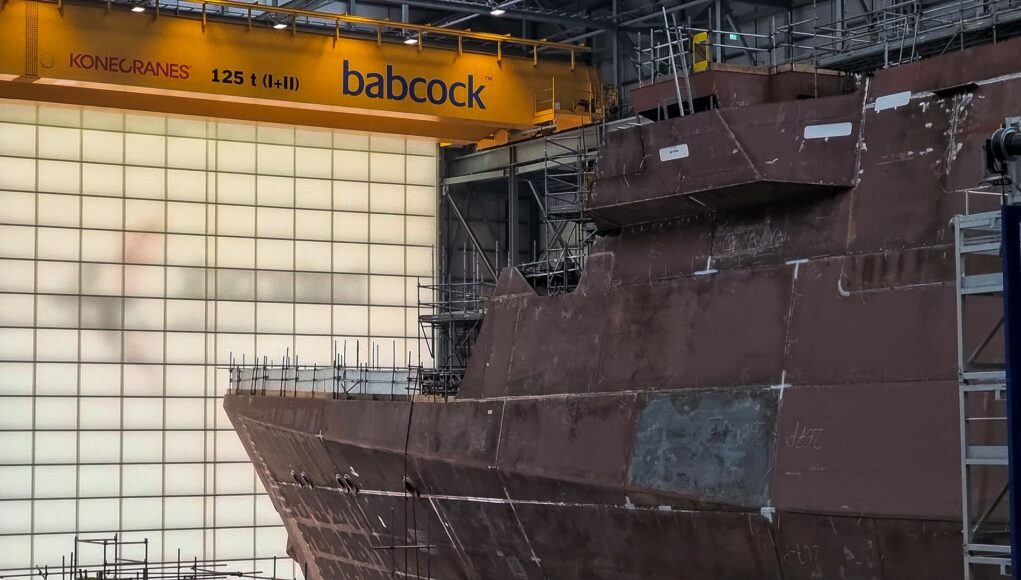
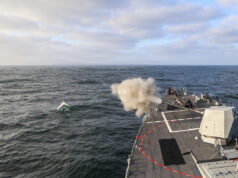
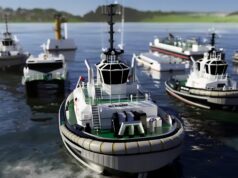
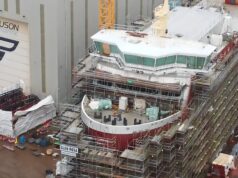
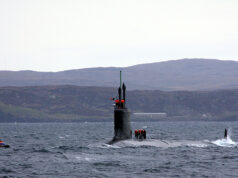
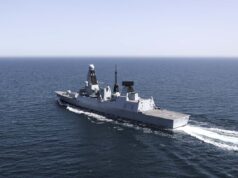

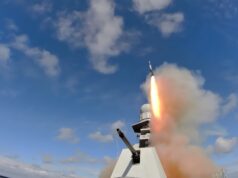
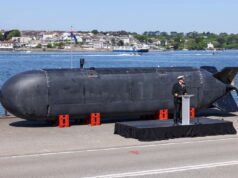
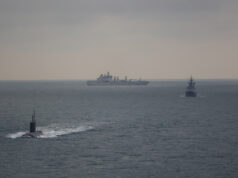
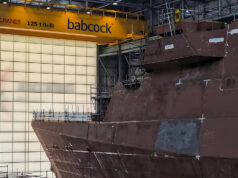

“Expectant”…………..pregnant pause.
Five low capability frigates in 10 years is pathetic by world standards and he’s behind schedule and over budget already
Technically he said Europe and that is indeed true. Europe has fallen heavily behind China, Korea and Japan in build speed and the UK is actually overtaking the rest of Europe. It’s really quite bizarre to think that the UK is winning in manufacturing but Europe is really quite a mess.
The capability of the ships I doubt has much bearing on the build speed, they could have been more complex and still be built at the same rate.
You should get out in Europe more and don’t fall for propaganda
Italian FREMM
2013, 2013, 2014, 2015,2016, 2017, 2018, 2019.. 6 years to deliver 8 frigates more advanced than T31, which is a development of an existing design and not a new full design
A Seaside EVO class cruise ship 339m 5000 passengers 170000 Gross tonnage 2019 laid down, first cruise late 2022 service and this with COVID.
Should build 2 type 31 AAW variants to cover the T45 armament and radar upgrades, it will also put our AAW fleet up to 8 which is where it should be. Cannot see us getting more than 6 T83 as they will be expensive so using a couple of cheaper T. 31s could protect other assets and leave the T45 & T83 to cover CSG.
It all depends on radar chosen for AAW ship, if heavier radars that alternative should be a T26 taking lessons and advice from Canadians and Australian projects
The babcock radar for AAW t31 is smart -L or the BAE 1840.
Don’t find that BAE radar model. If there is no T26 AAW(RN) size advantage for radar then the T31 AAW if sizable less expensive should be chosen.
But i would want to see planar panels with permanent 360º cover. And a configuration like thee Japanese and Italians(FREMM-EVO) designs with rear panels in a superstructure above the hangar and not all concentrated in same place.
I expect he means the S1850M, the BAE-modified version of Thales’s SMART-L.
Sorry Alex my fat fingers radar was S1850M, I do think a T31 with the better radar, and maybe drop the forward 40mm Bofors replaced with a seaceptor farm of 24-36 missiles would with the 32 vls a handy AAW load out. I am surprised that an rolling mount for the martlets and starstreak missile for use on ships maybe create new missile with 15km range and a 3p style seeker to use against swarm attacks using air burst.
Ok , it think the missile farm middle ship can have also space for th CAMM. The three guns are good for anti drone.
Starstreak needs to be guided to target by the operator but against drones it is essential fire and forget.
Didn’t Rosyth have to go on strike to get a decent pay rise , CEO’s package swelled to 10.6 million last year, can’t think that much of them !
He mentioned the Swedish corvettes there, so maybe something that could be linked to the T32 or is it too small or the wrong time frame? Interestingly he mentioned other exports for the T31. That all sounds positive.
We need the UK government to give a rolling order for new ships , 2 a year maybe to stop us getting into the mess we are un with the t23,s and to keep the skills built up with this and the t26 programme
Back in the day we used to work on the basis of Annual Naval Estimates. These set out the build plan clear for all to see of what was proposed to be ordered in the forthcoming year.
For Destroyers during the 20’s and 30’s this invariably included a Flotilla of 9 ships. Pre WW2 orders increased dramatically.
These were ordered latterly from various shipyards. It meant assuming they had life of 20 years we had no less than 180 in the Fleet.
Just saying. The point being there was no famine or gap even during the depression.
I’m glad the T26 looks as if it could be the standard Commonwealth Frigate.
The T32 needs to be a cheaper variant ie incorporating much of the T31 and T26 especially the later’s power plant.
What’s the mechanical completion status of the first ship, when is it due to come out of the build hall and commence commissioning activities and sea trials , just how complete is it ??
Unpopular opinion: I really like the Type 31!
For its role, non-peer opponent stuff like patrolling, pirates or protection against cheap swarming threats, I think it fits like a glove
It’s canon armament is the best choice for swarming boats and drones, where you don’t want to be shooting 2 million pound SeaCeptors at Iranian Putt-Putt drones and pirates.
Strike length mk41s for when shooting down their drones hasn’t sent a strong enough warning.
Quad packed SeaCeptors for more scary things pointed at you.
Helicopter for scary things underwater.
Apparently NSM canisters if you want that ship to Go Away Now.
And a big roomy hull for new toys if needed.
And at approximately 250 million each and only needing 110 crew?
😙🤌
Let’s hope we get some decent export orders too.
Favourite bit? Those 3P armed Bofors canons, so very versatile, boats, drones, missile CIWS? Thoroughbred Stuff Deleters
Missed two questions I’d like answered: 1. When will first of class enter the water (I thought it was meant to be June this year!).
2. How many Sea Ceptor cells will the ships have initially (before later insertion of Mk41 VLS)? (I’ve seen12 or 24 mentioned)
(1) We are mid october now ,unlikely to be getting wet this year,2025 a better bet.(2) Safe to say at least 12 – that is the official spiel 👍